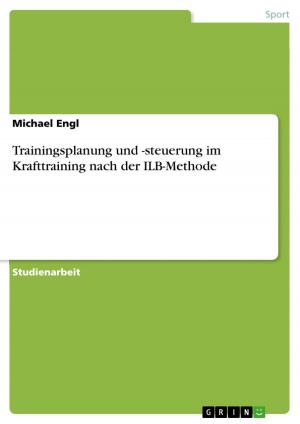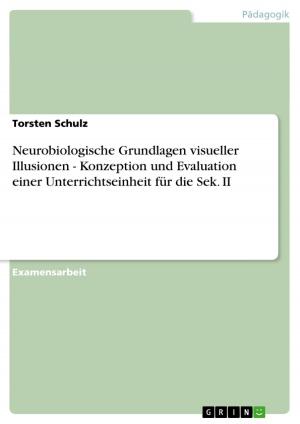Analysis of Rhm51, a DNA Recombinational Repair Gene in the Rice Blast Fungus
Nonfiction, Health & Well Being, Medical, Medical Science, Microbiology| Author: | Sali Atanga Ndindeng | ISBN: | 9783656090007 |
| Publisher: | GRIN Verlag | Publication: | December 27, 2011 |
| Imprint: | GRIN Verlag | Language: | English |
| Author: | Sali Atanga Ndindeng |
| ISBN: | 9783656090007 |
| Publisher: | GRIN Verlag |
| Publication: | December 27, 2011 |
| Imprint: | GRIN Verlag |
| Language: | English |
Doctoral Thesis / Dissertation from the year 2010 in the subject Biology - Micro- and Molecular Biology, grade: A, , course: Molecular Plant-microbe interaction - Agriculture/Rice Blast Disease/pathogenic shift/DNA double strand break repair, language: English, abstract: The ortholog of the Saccharomyces cerevisiae recombinational repair gene RAD51, Rhm51 was cloned from the genome of rice blast fungus Magnaporthe oryzae in order to clarify its role in the variability and pathogenicity. Rhm51 is a single copy gene, and is constitutively expressed at low levels during the cell cycle and at higher levels when the pathogen is grown in media supplemented with DNA damaging agents. We disrupted Rhm51 in two different strains of M. oryzae and both mutants showed reduced growth with conidia and colonies being highly sensitive to DNA double strand break-inducing agents. In addition, they lost the ability to undergo homologous recombination in adeA gene targeting. Mutants showed reduction in conidiation compared to the wild-type strains. Although mutants infected compatible rice cultivars, they produced significantly smaller and fewer lesions compared to wild-type strains and this might be due to the reduction in the amount of appressoria formed. DNA double-strand breaks (DSBs) quantified by the comet assay showed that loss of Rhm51 resulted in the accumulation of DSBs in mutant. Microscopic observation of nuclei and reactive oxygen species (ROS) production during hyphal growth and following appressoria formation revealed impaired mitotic entry, autophagic cell death and ROS production in Rhm51 deletion mutants. Rhm51-GFP foci were observed in all stages of the asexual life cycle including the invasive hyphae formed in an intact rice leaf sheath, demonstrating that M. oryzae suffers DSBs during vegetative and infective growth.These results for the first time show that Rhm51 is involved in growth and pathogenicity of M. oryzae through the accurate repair of DSBs that may arise during vegetative and infective growth.
Doctoral Thesis / Dissertation from the year 2010 in the subject Biology - Micro- and Molecular Biology, grade: A, , course: Molecular Plant-microbe interaction - Agriculture/Rice Blast Disease/pathogenic shift/DNA double strand break repair, language: English, abstract: The ortholog of the Saccharomyces cerevisiae recombinational repair gene RAD51, Rhm51 was cloned from the genome of rice blast fungus Magnaporthe oryzae in order to clarify its role in the variability and pathogenicity. Rhm51 is a single copy gene, and is constitutively expressed at low levels during the cell cycle and at higher levels when the pathogen is grown in media supplemented with DNA damaging agents. We disrupted Rhm51 in two different strains of M. oryzae and both mutants showed reduced growth with conidia and colonies being highly sensitive to DNA double strand break-inducing agents. In addition, they lost the ability to undergo homologous recombination in adeA gene targeting. Mutants showed reduction in conidiation compared to the wild-type strains. Although mutants infected compatible rice cultivars, they produced significantly smaller and fewer lesions compared to wild-type strains and this might be due to the reduction in the amount of appressoria formed. DNA double-strand breaks (DSBs) quantified by the comet assay showed that loss of Rhm51 resulted in the accumulation of DSBs in mutant. Microscopic observation of nuclei and reactive oxygen species (ROS) production during hyphal growth and following appressoria formation revealed impaired mitotic entry, autophagic cell death and ROS production in Rhm51 deletion mutants. Rhm51-GFP foci were observed in all stages of the asexual life cycle including the invasive hyphae formed in an intact rice leaf sheath, demonstrating that M. oryzae suffers DSBs during vegetative and infective growth.These results for the first time show that Rhm51 is involved in growth and pathogenicity of M. oryzae through the accurate repair of DSBs that may arise during vegetative and infective growth.















